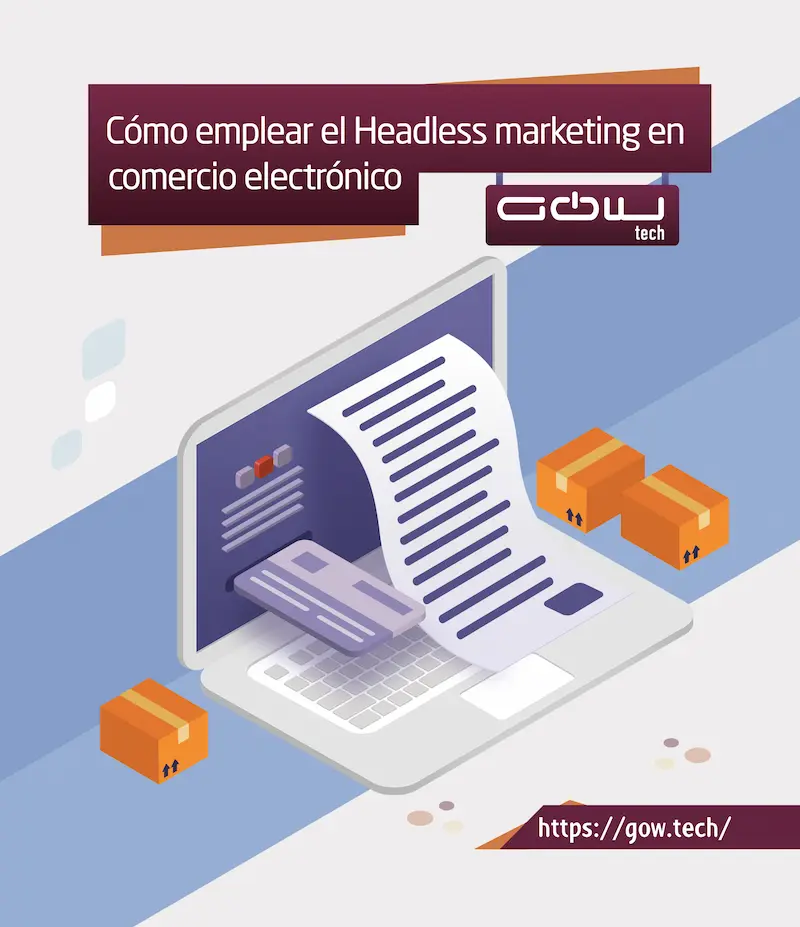The ecommerce sector has not stopped evolving and changing over time, all thanks to advances in technology. More and more people are making purchases through the Internet, due to the greater speed and comfort of the process with respect to traditional purchases. For this reason, from accelerator ecommerce.es, ecommerces specialists, they affirm that online stores are adapting to a business model focused on the personal needs and preferences of each consumer.
In Gowtech we explain to you in this post, what is the headless marketing and why its use in electronic commerce marketing is so important.
Headless Marketing is defined as a new concept that is increasingly being used in the marketing world. It is a strategy that allows business to be more competitive and respond faster to the new demands of users since it allows to find sales opportunities in all devices and platforms.
This approach tries to unify all purchase experiences, facilitate content changes and create a habitat where it is faster and simpler to adopt innovations .
This implies the collaboration of the company's marketing and sales teams, stop working apart, being able to unify the content and trade needs more quickly.
To understand this concept a little better, we will talk about three parts that compose it: Front-End, Back-End and API . First, the front-end is the visual part of the website for the user, which shows the product catalog and the customer can interact and perform several actions. Second, the back-end is the part of the invisible web development for the user, it is responsible for performing the necessary procedures for the web to function properly and treat the information to subsequently send it to the front-end. Finally, both components communicate through an API layer (application programming interface), which is the interface that allows you to send and receive information on both parties.
Among the differences of traditional trade and Headless trade are development, flexibility and personalization. In this way, traditional trade is characterized by a more rigid design, where changes in the front-end and back-end are always united and the experience is predefined while the Headless trade consists of a freer design where the front-end and back-end are totally independent and the experience is easily customizable and adapted to each individual.
Among the advantages of Headless Marketing we find the capacity to benefit from the advantages of a Cloud -based system , without having the inconvenience of not being able to make modifications in a simple way, thus avoiding maintenance needs. It also allows display and evolutions of the interface separate from logic , on the other hand, at the strategic level for the business, it modifies the profile of the developers necessary for maintenance and changes on the front . It also has various options for Back-End, broad technological scope and the ability to increase customer journey customization.
Nor can we forget its omnichannel character , the greatest adaptability to market demands and greater competition, strengthens the user experience and allows flexible marketing.
On the side of the disadvantages we find time and cost , since developers need time to create the business interface in a personalized way, also assuming a great cost for the company. And on the other hand, dependence on the marketing team, this means that marketing professionals depend completely on the IT team, to create the frontal presentation, update it and complete it with content.
In short, the Headless Marketing has emerged as a solution to the problems that many companies present when finding their customers, beyond the experience of their screen. The current customer increasingly demands personalized services and living unique purchase experiences adapted to their needs, at any time and place that wishes. The Headless trade draws the best of any eCommerce platform, eliminates the presentation layer and offers the possibility of determining the place of commercial activity and the data captured during the process.
Discover new marketing techniques that are currently being used by reading the following articles:





